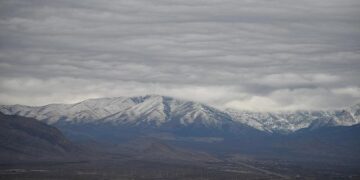In remote corners of the planet where human presence remains minimal, researchers are embarking on a quest to identify the fingerprints of human activity on pristine environments. Their mission: to uncover human-made problems lurking in areas largely untouched by development or industry. As the investigation unfolds, emerging findings are beginning to shed light on the subtle, and sometimes surprising, ways humanity impacts even the most isolated ecosystems. This evolving story offers new insight into the global reach of human influence, raising critical questions about conservation and the future of these fragile landscapes.
Human Footprints in Remote Wilderness Areas Spur New Environmental Concerns
Deep within some of the last untouched corners of the planet, a subtle yet persistent human mark is beginning to surface, raising alarms among environmentalists and scientists alike. From remote mountain ranges to vast arctic tundras, researchers are uncovering signs of pollution, waste, and microplastics — evidence that even the most isolated ecosystems are not immune to human influence. This emerging reality challenges long-held assumptions about wilderness preservation and sparks urgent discussions about the global reach of human activity.
Key concerns include:
- Invisible chemical residues disrupting native flora and fauna
- Human-generated noise impacting wildlife behavior patterns
- Slowly accumulating debris from expeditions and air traffic
| Region | Detected Contamination | Primary Source |
|---|---|---|
| Arctic Circle | Microplastic fibers | Long-range atmospheric transport |
| Andes Mountains | Trace metals | Tourist waste and mining runoff |
| Amazon Basin | Chemical pesticides | Illegal logging activities |
Emerging Research Links Industrial Activities to Unexpected Ecological Disruptions
Recent investigations have unveiled that industrial operations, often situated miles from pristine ecosystems, may inadvertently cause significant environmental disturbances. Researchers are now examining how pollutants, resource extraction, and infrastructural development in remote regions ripple outward, affecting the delicate balance of habitats previously assumed to be untouched. These disruptions manifest in unexpected ways-altered migration routes, shifts in native species populations, and even changes in soil chemistry-challenging previous assumptions about the resilience of isolated environments.
Key emerging impacts include:
- Microplastic contamination far from urban centers
- Subtle temperature variations influencing breeding cycles
- Unanticipated spread of invasive species linked to industrial transport
| Impact Type | Location | Observed Effect |
|---|---|---|
| Chemical Runoff | Mountainous Wetlands | Decreased amphibian populations |
| Noise Pollution | Remote Forests | Disrupted bird nesting patterns |
| Light Pollution | Coastal Reserves | Altered sea turtle hatchling orientation |
Experts Advocate for Stricter Protections and Stringent Monitoring in Pristine Regions
In light of recent findings revealing subtle yet alarming human footprints in some of the world’s most untouched environments, conservation specialists are calling for heightened protective measures. These pristine regions, once considered impervious to human impact due to their remoteness, now exhibit early signs of disruption-ranging from illegal resource extraction to undetected pollution. Experts emphasize that without immediate enforcement of stricter regulations and enhanced surveillance technologies, these fragile ecosystems could face irreversible damage.
Stakeholders advocate for a multi-faceted approach that includes:
- Advanced satellite monitoring to detect unauthorized activities in real-time
- Community-led conservation efforts to empower local guardians of the environment
- International cooperation to ensure cross-border protection and resource sharing
| Region | Primary Threat | Recommended Action |
|---|---|---|
| Arctic Tundra | Illegal mining | Drone Surveillance |
| Amazon Basin | Deforestation | Community Patrols |
| Coral Triangle | Pollution | Water Quality Monitoring |
The Conclusion
As the search continues for human-made problems in some of the world’s most remote and pristine environments, emerging findings underscore the complex and often unseen ways our actions ripple across the globe. While much remains to be uncovered, these early insights are prompting a deeper examination of humanity’s footprint – even in places we once believed untouched. As new data comes to light, the story of our planet’s delicate balance is far from over, signaling a critical need for vigilance and stewardship in every corner of the Earth.














![[News] Japan Develops 10nm Nanoimprint Technology, with Potential to Tackle EUV Bottleneck – TrendForce](https://earth-news.info/wp-content/uploads/2025/12/329851-news-japan-develops-10nm-nanoimprint-technology-with-potential-to-tackle-euv-bottleneck-trendforce-360x180.jpg)















